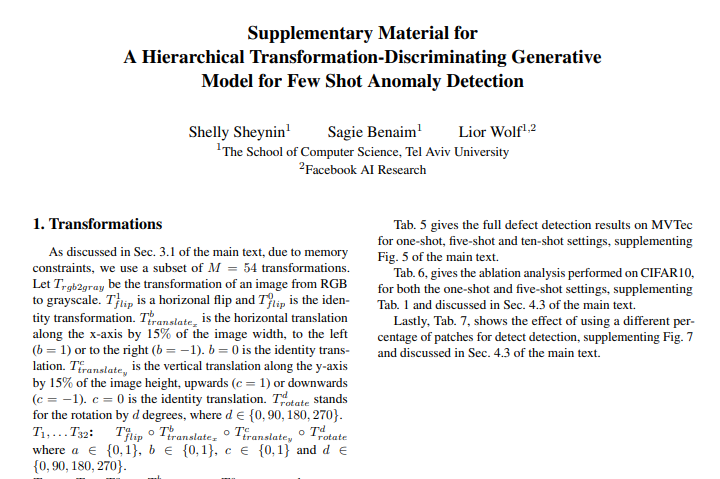A Hierarchical Transformation-Discriminating Generative
Model for Few Shot Anomaly Detection
Shelly Sheynin, Sagie Benaim, Lior Wolf

Abstract
Anomaly detection, the task of identifying unusual samples in data,
often relies on a large set of training samples. In this work, we consider the setting of few-shot anomaly detection in images, where only a few images are given at training. We devise a hierarchical generative model that captures the multi-scale patch distribution of each training image. We further enhance the representation of our model by using image transformations and optimize scale-specific patch-discriminators to distinguish between real and fake patches of the image, as well as between different transformations applied to those patches. The anomaly score is obtained by aggregating the patch-based votes of the correct transformation across scales and image regions. We demonstrate the superiority of our method on both the one-shot and few-shot settings, on the datasets of Paris, CIFAR10, MNIST and FashionMNIST as well as in the setting of defect detection on MVTec. In all cases, our method outperforms the recent baseline methods.
Results
Illustration of classification decisions made by a single-shot model trained on the Paris dataset. The first column is the training sample, then are random samples generated by the trained generative model. The other columns present samples from the test set of the Paris dataset that are either true positive (TP), true negative (TN), false positive (FP) or false negative (TN). See paper for additional results.

Our model can be also used for defect detection. For example, in the following image we show localization of defects in MVTec test images for one-shot defect detection. In the top row there are the original images, in which the anomaly region is delineated in red. In the bottom row, the localization provided by our method.

Paper
 |
[Link] |
Code
 |
[Link] |
Supplementary
 |
[Link] |
Last updated: April 2020